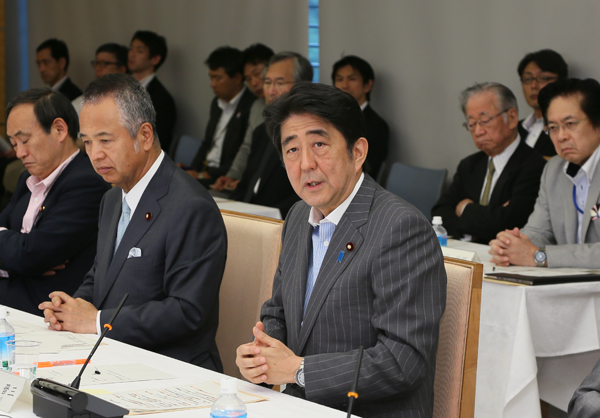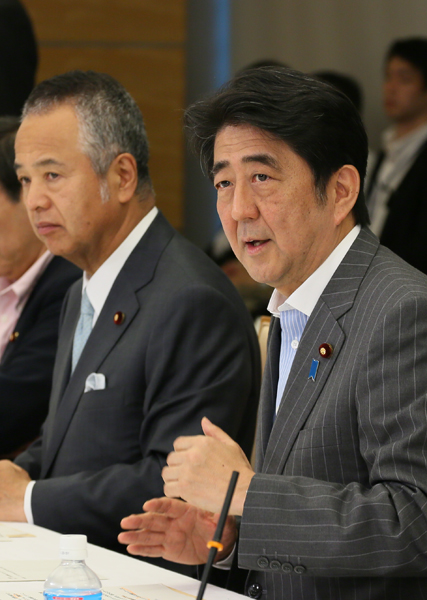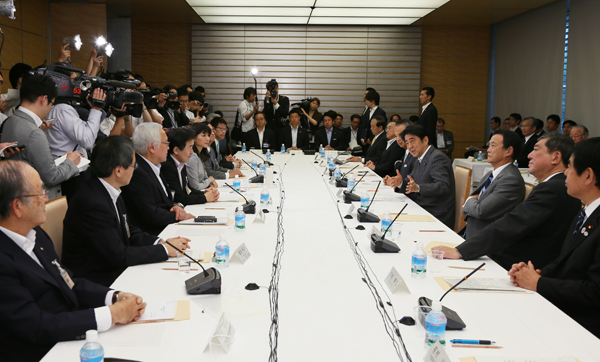Home > News > The Prime Minister in Action > June 2015 > Industrial Competitiveness Council
The Prime Minister in Action
Industrial Competitiveness Council
June 11, 2015
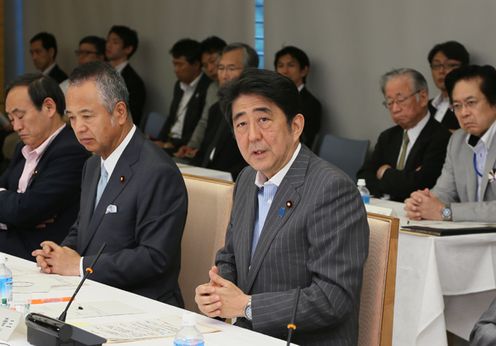
Photograph of the Prime Minister making a statement (1)
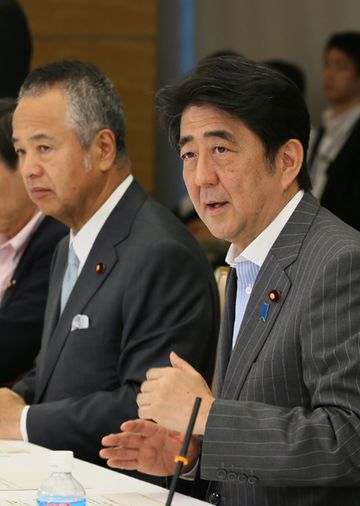
Photograph of the Prime Minister making a statement (2)

Photograph of the Prime Minister making a statement (3)
[Provisional Translation]
Prime Minister Shinzo Abe held the 21st meeting of the Industrial Competitiveness Council at the Prime Minister's Office.
During the meeting, discussion took place on revisions to the Japan Revitalization Strategy.
Based on the discussion, the Prime Minister said in his address,
“When I attended the G8 Summit in Lough Erne in the United Kingdom in 2013, among the three arrows of Abenomics, the leaders of each country were most interested in Japan’s monetary policy and asked me many questions on the subject. Therefore, my explanation touched on Japan’s monetary policy, Japan’s intentions, and the importance of finding a way to overcome deflation. At the recent G7 Summit in Schloss Elmau, I once again encountered strong interest, particularly regarding the progress of the third arrow of Abenomics, which is Japan’s growth strategy.
Now, in the current Diet session, I have continued to focus efforts on the reform of vested interests and 25 bills related to the growth strategy have been submitted to this Diet session as well. First, I would like to ensure that all 25 of these bills are passed.
Looking at the overall economy, corporate earnings have improved significantly, while employment and wages have continued to rise, both last year and this year. As a result, consumption, too, is expected to continue to recover. Within this context, the deflationary gap is steadily shrinking. Now, we must overcome supply-side constraints. We are just about to hit the ceiling on the supply side and what we need is precisely an increase in private-sector investment and innovation, as well as enhanced productivity. Of course, the more active role of women in society is also essential. Needless to say, every one of us needs to have a shared recognition that Japan is moving into a new stage that requires positive investments for the future.
In this new stage, we must fundamentally raise our country’s productivity through investments in IT and in human capital. Furthermore, through innovation, we will simultaneously overcome social issues, such as our aging population and declining birthrate, and achieve economic growth, thereby turning Japan into the leading model for addressing these issues. This is the goal I would like to achieve.
In order to raise the productivity of the entire economy, each region must also fully capitalize on its latent abilities. In this new stage, regional revitalization will continue to serve as a pillar of our growth strategy.
Based on today’s discussion, the entire world is paying even closer attention than we could imagine to what type of growth strategy we will create, and it is therefore my sincere hope that we can draw up an impactful policy package. I would like to ask for your cooperation for this endeavor.”

